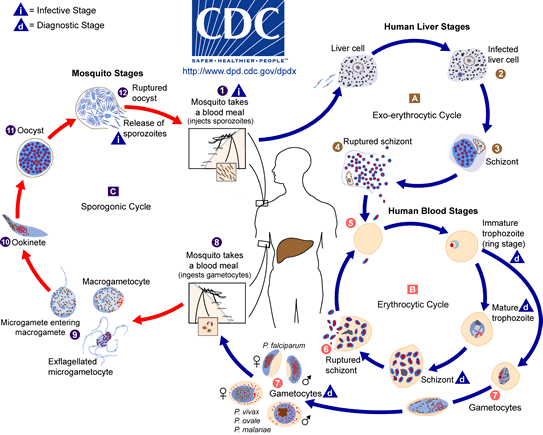QUESTION
What are the Host range?
ANSWER
Malaria is caused by a parasite, of the genus Plasmodium, which requires two organisms for the completion of its life cycle—an insect, which is usually referred to as the “vector,” in which sexual reproduction occurs, and a vertebrate “host,” in which asexual multiplication occurs.
Different species of Plasmodium infects a large range of vertebrate hosts, including many birds, reptiles, and dozens of different mammals, specifically primates (including humans) and rodents. These different types of Plasmodium are found all over the world; Plasmodium species that infect birds, for example, are found in much colder climates than human malaria.
The five species of Plasmodium that infect humans are found mainly in the tropics, and seasonally in the sub-tropics. Four of the species mainly infect humans only, but can also be found occasionally in other primates, such as chimpanzees and gorillas; the fifth species, P. knowlesi, is mainly considered a malaria of macaque monkeys in south-east Asia, but can also infect humans. As such, the host range of these malaria species extends wherever humans live throughout the world. However, in reality, the distribution of malaria is constrained to warmer, wetter climates based on the developmental needs of the parasite and also the vector.
For mammalian malaria, these vectors are all mosquitoes of the genus Anopheles, which breed in stagnant freshwater and also have temperature requirements, above or below which they will not develop. However, these mosquitoes are still found in many parts of the world, from far northern latitudes of Canada and Siberia in the summer to similar latitudes in the southern hemisphere and also throughout the tropics.
